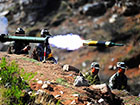Personal Experience in Recovery Operation of Xisha and Nansha Islands
Li Jingsen
then Executive Commander of Ship Yongxing
Respected delegates,
Good morning!
2016 marks the 70th anniversary of China’s recovery of South China Sea Islands. As a veteran who took part in the recovery operation, I feel very honored,and I am extremely excited to attend the commemoration today. First of all, I want to express my congratulation for the opening of this commemoration, and also my respects for every delegate present here.
South China Sea Islands are Chinese territory since ancient times. After the outbreak of the Anti-Japanese Aggression War, Japan occupied the islands. After the victory of the Second World War, the Anti-Fascist War it was a matter of course and beyond question for Chinese government to recover South China Sea Islands in accordance with the spirit of the Cairo Declaration and Potsdam Proclamation. At that time, the international community, neither the major powers of the Ally Countries such as the U.S. and the Soviet Union, nor the countries around the South China Sea expressed disagreement on the official recovery of South China Sea islands by Chinese government.
At that time, Chinese government selected 4 ships from those aided by the U.S. government to perform the recovery task. And I was honored to take part in the event as the executive commander of Ship Yongxing. Lin Zun was assigned as General Commander of the Fleet, and Yao Ruyu was his Deputy. According to the operation plan, Lin Zun was the operation commander, and he commanded Ship Taiping and Ship Zhongye to recover Nansha Islands, while Yao Ruyu commanded Ship Yongxing and Ship Zhongjian to recover Xisha Islands. Officials from relevant government departments and troops to be deployed on the islands would go with the ships. Chinese government also decided to name the main islands recovered after the names of two command ships, namely the main island of Nansha is Taiping Island, while that of Xisha is Yongxing Island. And the other two islands are in namesake of Ship Zhongye and Ship Zhongjian.
The Fleet set out from Shanghai on 29th October 1946, and arrived at the Port of Yulin Hainan Island on 9th November. Due to the bad weather, the fleet heading for Nansha Islands returned to base twice, waiting for appropriate time to set sail again. Ship Yongxing and Ship Zhongjian departed on 27th November, and arrived at the main island of Xisha Islands on the 28th. Ship Yongxing patrolled around the island, found nothing odd and fired warning guns toward the midair above it, and then launched the advance team and small boats to land the island. As the Executive Commander of Yongxing, I was tasked to command the advance team. After the team landed the island and patrolled around, part of crew of the two ships arrived in different batches.
In the following days, garrison and construction personnel transported onto the island, the radio stations, living materials and monument with the name of the island. The recovery ceremony was held on the island, and the monument erected. Even till now, I still remember clearly the scene we set up the monument inscribed with three characters Yongxing Dao. On 9th December, Ship Taiping and Ship Zhongye departed Yulin Port and arrived at Taiping Island on the 12th, and accomplished the recovery of the main island of Nansha Islands. Then, Chinese government made proclamation to the whole world that China had recovered the South China Sea Islands.
In May 1947, Ship Yongxing was dispatched to the South China Sea again, carrying out the cruising task, in which we had patrolled every major islands and reefs of Nansha Islands, even to the southernmost point Zengmu Reef, apart from landing and inspecting Taiping Island.
When we arrived at Taiping Island, the main island of Nansha Islands, I took a small boat to land the island again. On the island, what we saw were all historical items of Chinese fishermen who had ever lived there. There were temples of local gods built by them, and the memorial tablet for the god was inscribed in Chinese characters. There was a freshwater well nearby, and water from it was clear and sweet. I had found beside the well a coin made in the time of Yongle of Ming Dynasty.
Except some destroyed military facilities left by Japanese troops, there were no other traces that demonstrated any foreigner had been inhabited and lived on the island.
As the executive commander of Ship Yongxing, I am one of the eyewitnesses of history. What I want to emphasize is that either the recovery action of Xisha Islands by Ship Yongxing, or the later cruise mission in the South China Sea had found no human traces left except those by Chinese fishermen. It is sufficient to prove that South China Sea Islands always belong to China.
As an old navy guy, and an academic researcher in navigation for years, I want to remind everyone, especially youngsters, that China is not only a land power, but also a maritime power. We have the land area of 9.6 million square kilometers, and we also own jurisdictional sea areas of 3 million square kilometers! It is a must for us to resolutely safeguard territorial sovereignty and maritime rights and interests of our country!
At the end, I wish our country win the final victory in the struggle of maintaining sovereignty and maritime rights and interests in South China Sea! I also wish the dream of great rejuvenation of the Chinese nation be realized as early as possible!
















